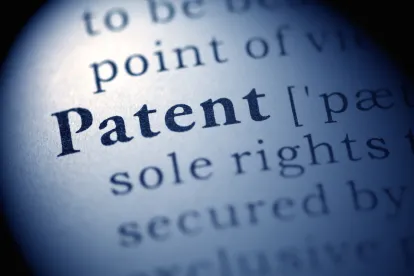December 1, 2020 marked the five-year anniversary of the Supreme Court’s abrogation of Form 18—the model complaint that provided the minimum requirements for stating a claim of direct infringement. Following the abrogation of Form 18, patent infringement claims must satisfy the plausibility standard articulated in Bell Atlantic Corp. v. Twombly, 550 U.S. 544 (2007) and Ashcroft v. Iqbal, 556 U.S. 662 (2009). Courts, however, have diverged in applying Iqbal and Twombly to patent cases. As a result, pleading standards now vary from jurisdiction-to-jurisdiction (and even from judge-to-judge within the same jurisdiction).
In a series of blog posts, we are exploring how courts are applying the Iqbal/Twombly pleading standards to patent cases five years after Form 18 was abrogated. In Part 1, we examined Federal Circuit opinions, including the seeming inconsistencies among those opinions. In this installment, we look at how pleading standards have been applied in the District of Delaware.
We have reviewed 39 decisions issued in the District of Delaware from 2018 through 2020 addressing the application of Iqbal and Twombly to claims of direct infringement in the context of motions to dismiss. Overall, courts in the District of Delaware have denied a large majority such motions. More specifically, out of the 39 decisions we reviewed, the court denied the motions to dismiss in 29 cases (74%), finding the allegations of direct infringement were sufficient under Iqbal and Twombly. In seven cases (18%), the court held that the allegations of direct infringement were insufficient to state a claim. And in three cases (8%), the court found the allegations were partially deficient.

Examining the Delaware decisions on a judge-by-judge basis reveals the uneven approach courts have taken in applying Iqbal and Twombly to patent infringement cases. For example, the judges in Delaware are split on whether element-by-element factual allegations are required or, instead, whether conclusory allegations of infringement are sufficient.
Judges in the District of Delaware also disagree as to the scope of the Federal Circuit’s opinion in Disc Disease Solutions, Inc. v. VGH Solutions, Inc., 888 F.3d 1256 (Fed. Cir. 2018). As discussed in Part 1 of this series, Disc Disease held that a conclusory allegation of infringement was sufficient under Iqbal and Twombly where the case involved “simple” technology and the complaint included photos of the packaging of the accused product. Several judges in Delaware have suggested that the minimal pleading standard articulated in Disc Disease only applies in cases involving similarly “simple” technology where reasonable inferences can be drawn from images of the accused product. But at least one judge (Judge Andrews) has rejected efforts to place such limits on Disc Disease. See, e.g., Nncrystal US Corp. v. Nanosys, Inc., Civil Action No. 19-1307-RGA, 2020 U.S. Dist. LEXIS 22462, *6-7 (D. Del. Feb. 10, 2020).
We summarize below how various Delaware judges have approached pleading standards for claims of direct infringement.
Judge Andrews
We reviewed nine decisions that Judge Andrews issued from 2018 through 2020 addressing motions to dismiss claims of direct infringement. Judge Andrews denied the motions in eight of those cases. Moreover, he has stated that “very little is required in order to plead a claim of patent infringement.” FO2GO LLC v. KeepItSafe, Inc., Civil Action No. 18-807-RGA, 2019 U.S. Dist. LEXIS 64505 (D. Del. Apr. 16, 2019). He has held, for example, that even a conclusory assertion that an accused product practices “each and every element of at least one claim” is sufficient to state a claim. See Nncrystal, 2020 U.S. Dist. LEXIS 22462, *8.
As noted above, Judge Andrews has also held that the standard articulated in Disc Disease is not limited to cases involving “simple” technology. See, e.g., Nncrystal, 2020 U.S. Dist. LEXIS 22462, *6-7; Election Sys. & Software, LLC v. Smartmatic United States Corp., Civil Action No. 18-1259-RGA, 2019 U.S. Dist. LEXIS 34738, *5 n.3 (D. Del. Mar. 5, 2019).
Judge Connolly
We reviewed ten decisions that Judge Connolly issued from 2018 through 2020. Judge Connolly denied the motions in eight of those cases. It is unclear whether Judge Connolly requires element-by-element factual allegations to state a claim. In a recent decision, Judge Connolly seemed to state that such allegations are required: “To provide notice, a plaintiff must generally do more than assert that the product infringes the claim; a plaintiff . . . must alleg[e] some facts connecting the allegedly infringing product to the claim elements.” Dynamic Data Techs., LLC v. Brightcove Inc., Civil Action No. 19-1190-CFC, 2020 U.S. Dist. LEXIS 127734, *3 (D. Del. July 20, 2020). But later in the same decision, Judge Connolly made the opposite assertion: “the Federal Rules of Civil Procedure do not require a plaintiff to plead facts establishing that each element of an asserted claim is met.” Id. at *4.
Judge Connolly has also issued seemingly inconsistent decisions concerning the scope of the Federal Circuit’s holding in Disc Disease. For example, in one case, Judge Connolly held that including images of an accused product alongside conclusory allegations of infringement is sufficient to state a claim. See Super Internconnect Technologies LLC v. Sony Corp., Civil Action No. 18-cv-1731, 2019 U.S. Dist. LEXIS 164814, *6 (D. Del. Sept. 26, 2019). Three months later in a case brought by the same plaintiff, Judge Connolly reached the opposite conclusion, finding that images and conclusory allegations of infringement were insufficient to state a claim because the technology at issue was “not simple” as in Disc Disease. See Super Interconnect Techs. LLC v. HP Inc., Civil Action No. 19-0169-CFC, 2019 U.S. Dist. LEXIS 217315, *5 n.3 (D. Del. Dec. 18, 2019).
Judge Noreika
We reviewed four decisions that Judge Noreika issued from 2018 through 2020. Judge Noreika denied the motions in three of those cases. While Judge Noreika denied three-fourths of the motions she addressed, she has also held that element-by-element factual allegations are required: “[T]o state a claim of direct infringement sufficient to withstand a motion to dismiss, a plaintiff must plead facts that plausibly suggest that the accused product meets each limitation of the asserted claim(s).” LoganTree LP v. Omron Healthcare, Inc., No. 18-1617 (MN), 2019 U.S. Dist. LEXIS 159730, *6 (D. Del. Sep. 19, 2019).
Magistrate Judge Burke
We reviewed seven decisions that Judge Burke issued from 2018 through 2020. Judge Burke denied the motions in four of those cases. Judge Burke has held that a conclusory allegation that the accused product practices the limitations of an asserted claim is insufficient: “That amounts to nothing more than stating: ‘Your product infringes my patent claim.’ There needs to be something set out beyond a legal conclusion—i.e., some facts alleged that show why it is plausible that the products infringe.” DIFF Scale Operation Research, LLC v. MaxLinear, Inc., Civil Action No. 19-2109-LPS-CJB, 2020 U.S. Dist. LEXIS 80634, *7 (D. Del. May 7, 2020).
Judge Burke has attempted to reconcile the seemingly inconsistent decisions from other judges in Delaware concerning the necessity of element-by-element factual allegations. In particular, he has explained that it is unnecessary for a complaint to “establish” or “prove” each element of an asserted claim is met. But Judge Burke has also explained that a plaintiff must nonetheless allege facts that “plausibly” indicate that “the accused products contain each of the limitations found in the [asserted] claim.” ID Image Sensing LLC v. Omnivision Technologies, Inc., Civil Action No. 20-cv-136-RGA, 2020 U.S. Dist. LEXIS 220189, *16 (D. Del. Nov. 24, 2020). It remains unclear whether other judges in Delaware will adopt Judge Burke’s artful effort to reconcile seemingly inconsistent pleading standards.
Magistrate Judge Fallon
We reviewed two decisions that Judge Fallon issued from 2018 through 2020. Judge Fallon granted the motions in both cases. Like Judges Noreika and Burke, Judge Fallon has held that element-by-element factual allegations are required: a plaintiff “must plead facts that plausibly indicate that the accused products contain each of the limitations found in the claim.” Uniloc 2017, LLC v. ZenPayroll, Inc., Civil Action No. 19-1075-CFC-SRF, 2020 U.S. Dist. LEXIS 130261, *6 (D. Del. July 23, 2020).
Magistrate Judge Hall
We reviewed four decisions that Judge Hall issued from 2018 through 2020. Judge Hall denied the motions in three of those cases. Unlike Judges Noreika, Burke and Fallon, Judge Hall has held that element-by-element factual allegations are not necessary: “There is no requirement that the plaintiff plead facts establishing that each element of an asserted claim is met.” Boston Fog, LLC v. Ryobi Techs., Civil Action No. 19-2310-LPS-JLH, 2020 U.S. Dist. LEXIS 56559 (D. Del. Mar. 3, 2020).
Key Takeaways
The District of Delaware provides a microcosm of the inconsistent application of Iqbal and Twombly to patent cases nationwide. Several Delaware judges have held, based on Disc Disease, that purely conclusory assertions of infringement are sufficient. For example, a bare assertion that an accused product meets “each and every limitation” of an asserted claim may be sufficient before Judge Andrews. Other Delaware judges, however, have held that plausible, element-by-element factual allegations are required. For example, Judge Burke has been willing to consider whether a complaint alleges facts plausibly showing that individual claim elements are met. As such, the viability of a motion to dismiss under Iqbal and Twombly in Delaware may depend largely on which judge is assigned to the case.



 />i
/>i

